STYLES OF WORK
What makes a good working dog is the ability to perform well in whatever position they get put into. Wether they are required to work the head, wing or the tail of a mob - they must be able to fill the position and step in when needed.
However dogs specialities vary and it is important to understand what type of dog you have in front of you. Dogs feel most comfortable doing the Job and position they naturally want to do.
However dogs specialities vary and it is important to understand what type of dog you have in front of you. Dogs feel most comfortable doing the Job and position they naturally want to do.
HEADING DOGS
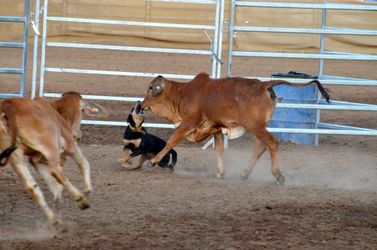
Headers run ahead of the stock to stop the forward movement and head them.
Some also call them fetching or gathering dogs. These type of dogs tend to naturally turn the stock and direct them back to the handler.
DRIVING OR HEELING DOGS
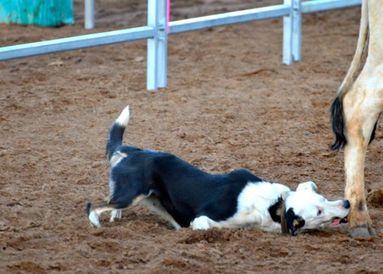
Driving dogs generally find it more comfortable to trot behind a mob and keep them moving.
They use their power and force to ensure the movement of the stock and ensure the mob will continue flowing into the forward direction.
LEAD DOGS
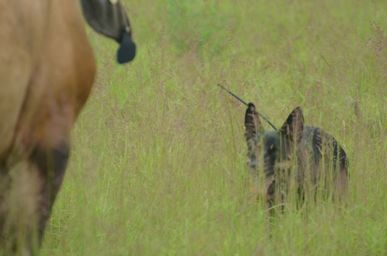
Lead dogs have a natural instinct of travelling in front of the mob. They will slow down and control the speed but not stop the progress of a mob.
Good lead dogs are rather rare and some people mistake them as being a weak dog which couldn't be further from the truth.
A lead dog is used to prevent the head of the mob moving too quickly. They can be cast to the head of the mob, but instead of bringing stock back to the handler they will give ground when the stock approach, slowing the mob's progress but not blocking and turning.
Lead dogs are born, not made.
Good lead dogs are rather rare and some people mistake them as being a weak dog which couldn't be further from the truth.
A lead dog is used to prevent the head of the mob moving too quickly. They can be cast to the head of the mob, but instead of bringing stock back to the handler they will give ground when the stock approach, slowing the mob's progress but not blocking and turning.
Lead dogs are born, not made.
THE IMPORTANCE OF BARK
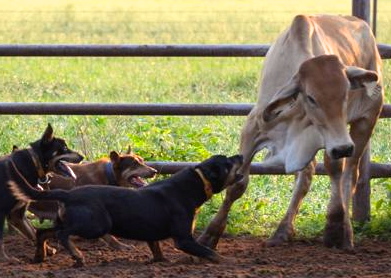
Bark can be an asset to any working Dogs team. When used at the right time it is a useful skill and can be way more efficient than bite.
Kelpies and Border Collies with a good bark whilst working stock are a rare find.
The New Zealand Huntaway for example is quite the oppostite. Bred for a deep loud noise, the Huntaway breed will not disappoint in this field.
A working dogs bark should be coming from excitement and confidence, not fear or weakness. Bark coming from a well balanced dog when required can be useful in many situations, especially when they come with an on and off switch :)
Kelpies and Border Collies with a good bark whilst working stock are a rare find.
The New Zealand Huntaway for example is quite the oppostite. Bred for a deep loud noise, the Huntaway breed will not disappoint in this field.
A working dogs bark should be coming from excitement and confidence, not fear or weakness. Bark coming from a well balanced dog when required can be useful in many situations, especially when they come with an on and off switch :)
EYE
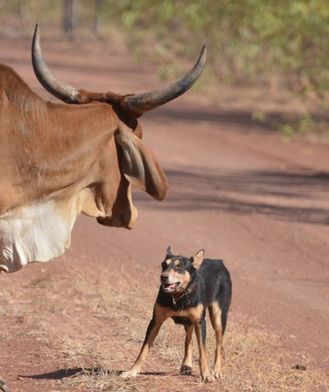
The amount of eye a dog uses defines the effectiveness of its work. Dogs naturally show more eye when they get more intent and focused or sometimes cautious and frightened.The eye in working dogs can be placed in a few categories.
The stare is so intent it appears to be mesmerised.
Sticky dogs may lack cover when they get stuck on one animal , unaware of the rest of the mob moving away and they tend to ignore commands.
- Too much eye (sticky)
The stare is so intent it appears to be mesmerised.
Sticky dogs may lack cover when they get stuck on one animal , unaware of the rest of the mob moving away and they tend to ignore commands.
- No eye (loose eyed)
- Correct amount of eye